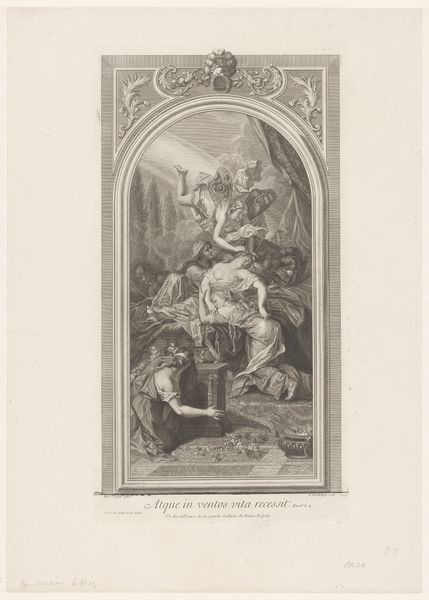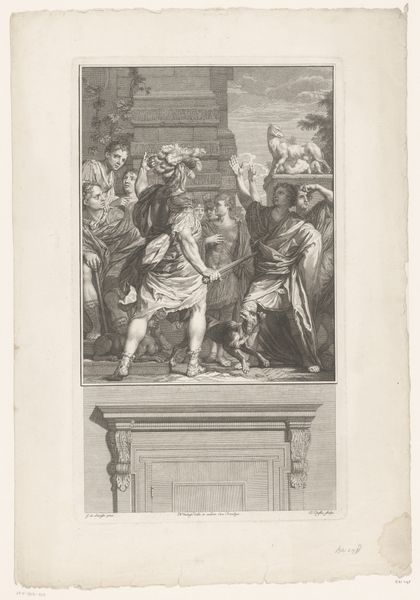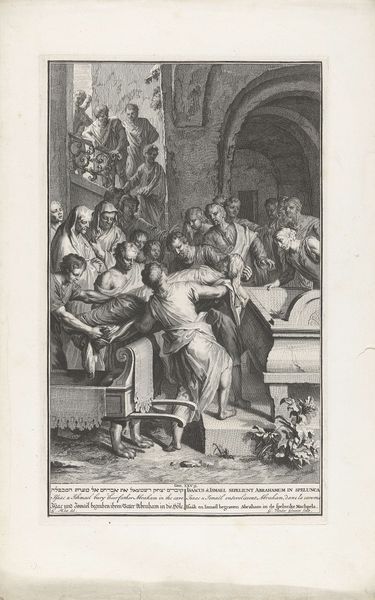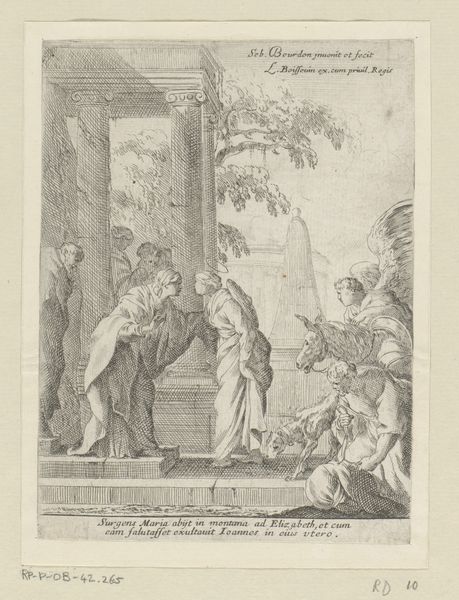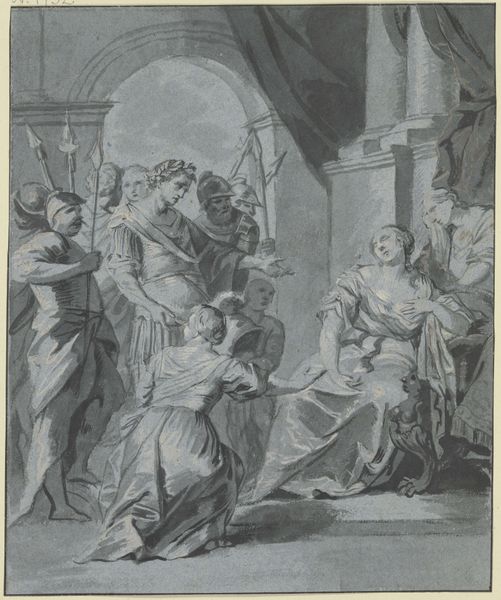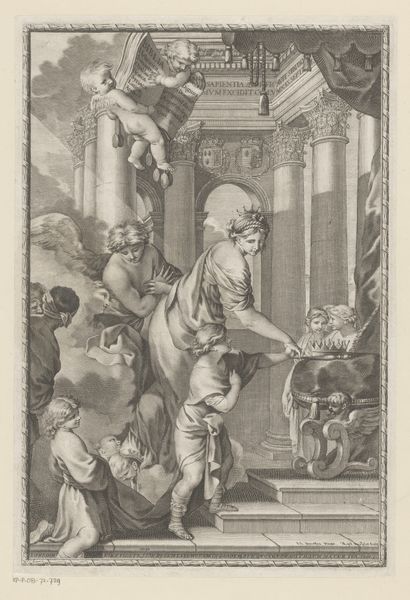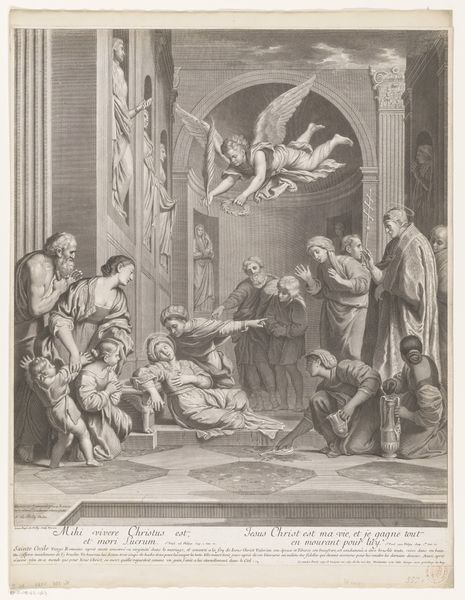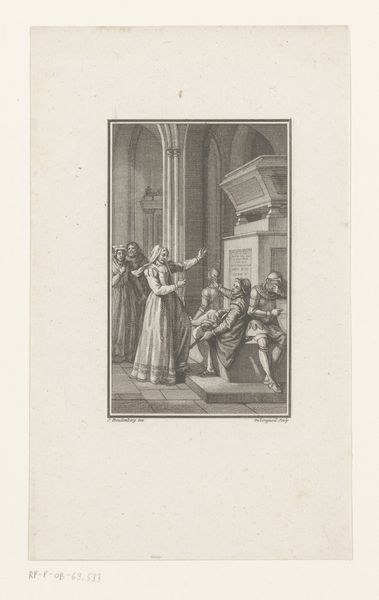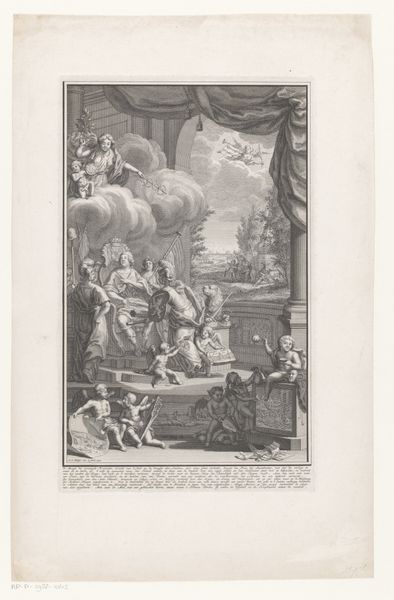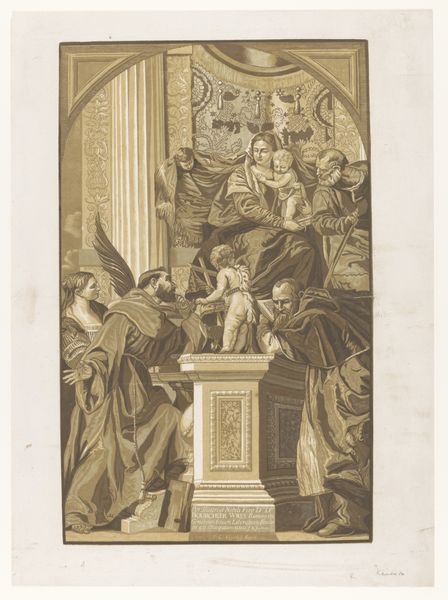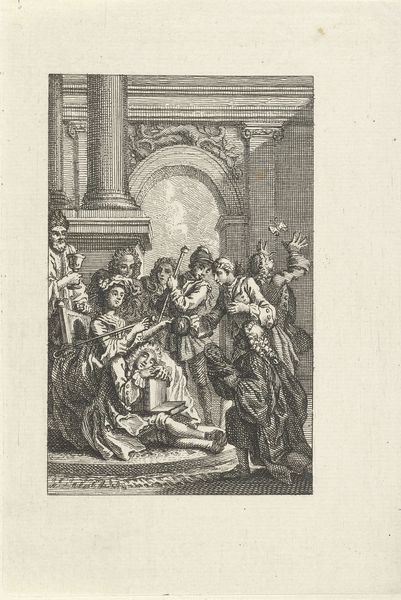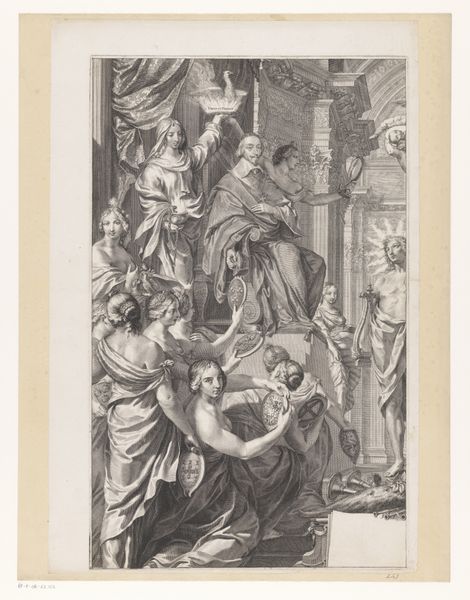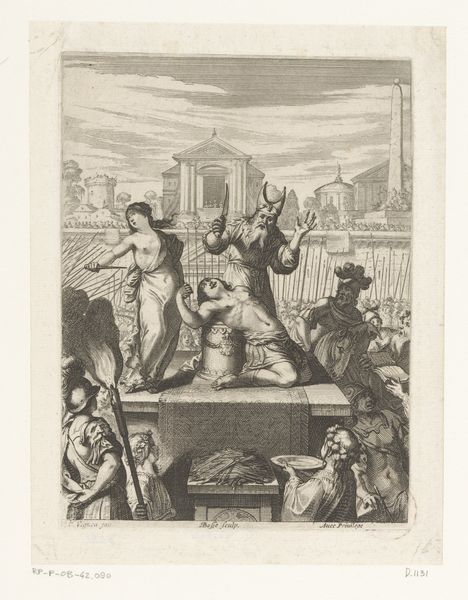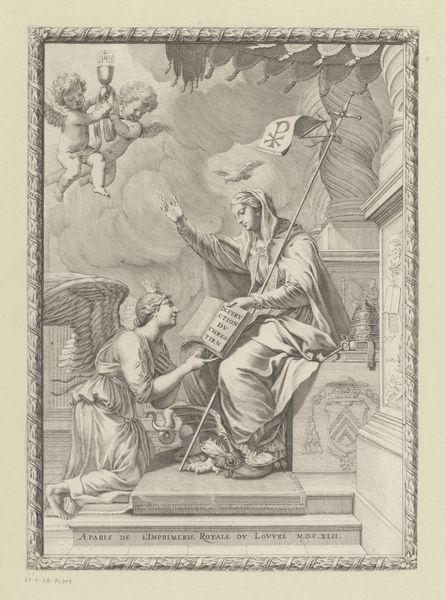
print, paper, engraving
#
baroque
# print
#
old engraving style
#
figuration
#
paper
#
line
#
history-painting
#
engraving
Dimensions: height 460 mm, width 244 mm
Copyright: Rijks Museum: Open Domain
Editor: This is "Aeneas and his Family Fleeing Troy," an engraving made by Louis Desplaces somewhere between 1692 and 1739. The use of line is incredible. What strikes me most is the dynamic energy within such a rigidly defined medium. How do you see this piece? Curator: For me, it’s all about the process of reproduction. This isn't just a static image; it’s a commercial artifact. Desplaces's engraving serves to disseminate the story of Aeneas, turning myth into a commodity through the labor of the artist and the mechanics of printmaking. How do the figures' gestures, in your view, direct our understanding of the scene? Editor: Well, there's such urgency, right? Everyone seems caught in a moment of desperate action. I suppose that translates the narrative for consumption. Curator: Exactly. It reduces a complex history to readily digestible emotion. The lines themselves dictate how light is perceived, forming volume and conveying an overwhelming feeling of turmoil within the space, drawing our eyes to the figure carrying his father. Does this piece challenge your preconceptions about art production? Editor: It does. I hadn’t considered how engravings make art accessible, less about the artist's singular touch and more about the means of distributing images widely. I usually only think about paintings as products when their commercial success turns the painter into some kind of celebrity... Curator: Indeed! The materials and labour transform art and disseminate meaning. I'm pleased our perspectives have merged. Editor: Absolutely, now I know I'll be thinking about printmaking differently.
Comments
No comments
Be the first to comment and join the conversation on the ultimate creative platform.
